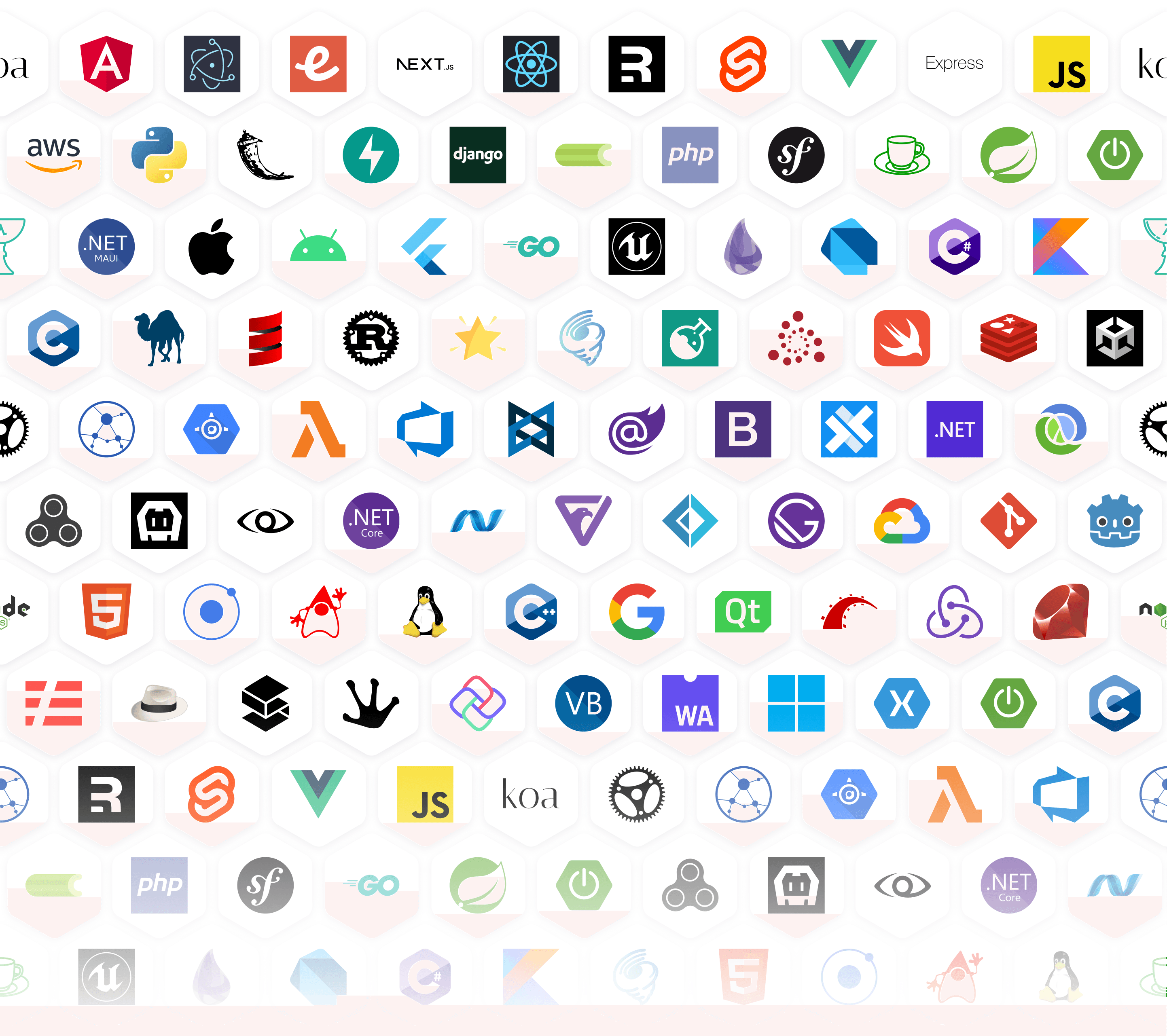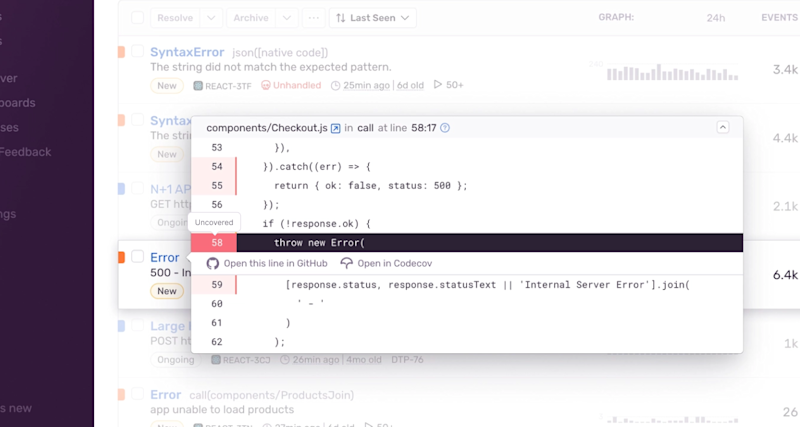See the untested code causing errors - or whether it’s partially or fully covered - directly in your stack trace to avoid similar errors from happening in the future.
Code Coverage for Developers
How Codecov by Sentry helps








Getting started with Sentry is simple
We support every technology (except the ones we don't).
Get started with just a few lines of code.
See — it’s really just one command.
npx @sentry/wizard@latest -i nextjs
That's it. Check out our documentation to ensure you have the latest instructions.
FAQs
There's always things happening at Sentry

Debugging context
Understand the conditions of each error by viewing the associated release, environment, tags and more.

Of course we have more content
Get monthly product updates from Sentry
Sign up for our newsletter.
Sign up for our newsletter.
And yes, it really is monthly. Ok, maybe the occasional twice a month, but for sure not like one of those daily ones that you just tune out after a while.
Fix it, don’t observe it.
Get started with the only application monitoring platform that empowers developers to fix application problems without compromising on velocity, code quality, or developer experience.




